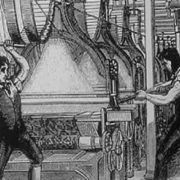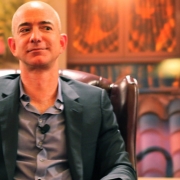Having spent half of a year experiencing firsthand the labyrinthine bowels of an Amazon Fulfillment Center, I must ask:
“What are all the complaints about?”
Employment at Amazon was not perfect. Then again, no job will be. But for those wanting to establish themselves with a job history or get back into the routine of full-time employment, being at Amazon isn’t the torturous ordeal some have described. Coming off a year’s sabbatical and being a technical writer before that, work at an Amazon facility was a shining opportunity to regain some lost footing.
In retrospect, I can’t but be thankful for that. It wasn’t just the financial boon, but also the chance to persevere that elicited and encouraged growth and strength in both physical and mental senses.
Getting hired by Amazon was almost too easily achieved. Applying online hearkens back to the glorious days of spinach-green Game Boy screens. Pass a series of ridiculously simple mini-games and you are almost guaranteed an offer of conditional employment. Show up for a scheduled orientation a few days later and there’s a rundown of various tasks, basic processes, and of course the benefits.
Speaking of benefits, they are more than liberal for an operation of Amazon’s size and scope. Need time off? The company is fairly flexible about that. Employee discounts? Offered out the wazoo. Want to follow your dreams toward your one true career? Stick around for a year and Amazon pays for most of your school tuition and books. Want health benefits? You get ‘em, your family gets ‘em, your dog gets ‘em. The pay itself is better than average. The one perk that I saw employees constantly begging for but were forever denied was free Amazon Prime. And that’s no reason to gripe if it’s the worst that the corporate honchos refused to grant.
After that came the training: straightforward and comprehensive. It could be the most fluid and forgiving training regimen that I’ve seen. The learning curve was not particularly demanding, and new hires were given leeway as they gained a sense of their assigned tasks.
Every night’s shift began with everyone in the department doing “stand-up”: gathered around the supervisor of the evening, we were given a brief summary of the night’s work, a rundown of any issues, and encouragement about what to look forward to during the next several hours. A few stretching exercises and then it was off to the races. For the next ten hours we were on Jeff Bezos’ time clock.
Is the labor hard? At times, yes. Especially during “Peak Season” between Thanksgiving and Christmas Eve. Otherwise it’s much like… gasp!… real work. My schedule was Wednesday through Saturday nights, 6 p.m. until 4:30 in the morning. There were two fifteen-minute breaks and one unpaid half-hour for lunch around 11. The break room had six large-screen TVs and forty microwave ovens. The vending machines were loaded with enough confectionary to feed a Texas county.
My primary mission was stowing. It means pushing a cart of merchandise around the warehouse, finding bin space that a product can fit in, using a laser scanner on the bar codes and then physically moving the item into the bin. The facility’s inventory system was at all times tracking the associate’s rate of work as well as accuracy. Several times during the night the rates were posted so that each employee could see how he or she was faring. And as many who have written about working at Amazon have already noted, the managers are looking hard at those rates…
My stowing during those first few weeks? Abysmal. In fact, I was the very worst of the lot from our orientation group. Getting fired would be a decision born within the circuitry of the Amazon master computer somewhere in Seattle, not any human judgment. My career came a few steps too close to ending during that first month or so.
Instead the managers on site approached me with concerns about my performance, and then worked with me to improve my effectiveness. For them my status as an employee was an asset to be stimulated to the best of my ability. Amazon employees aren’t meant to be readily disposable: they require an investment of time and effort to make the most of them. That was afforded to me, as it should be afforded to any employee under most circumstances. It was an investment that I wanted to give a fair, honest, and thorough return on.
Their approach succeeded: during the next few nights I was achieving higher and higher rates. By the end of peak season my rates were among the highest of the stowing department and sometimes the highest, period.
Safety was the highest priority issue at our facility. I believe it is much the same for other fulfillment centers. During every stand-up we were drilled with how to properly handle heavy merchandise so as to avoid injury. The “safe” routes of transit across the facility were clearly marked off: stay in the green and you’d be fine, but venture into the lanes delineated with red and you risked being hit by a forklift or other vehicle. Only the very careless would find complaint about such restrictions. As with so much else in life, there are boundaries to respect. And though some have complained about the heat within the facilities, there is no real getting around that. But water dispensers were spread throughout the place, and we were told often to stay hydrated.
What truly earned my respect was how they accommodated a disability. For a decade and a half I have dealt with the diagnosis of bipolar disorder. Mania and depression at times dogged my steps during those long traipses through the aisles as I worked. The average Amazon warehouse is so vast that at times two people can be a hundred feet apart with no clue that there are others in the building. And every so often the silence and sense of loneliness would intrude upon my labor.
So I told my managers about it. And they collaborated with me. During those occasions when the manic-depression was worst they assigned me to each-receive: the part of the process where carts are loaded with merchandise after coming in off the trucks. There is no being alone on each-receive. Again, rates were measured. Right out of the gate mine soared to the top of the chart.
To be a stower at an Amazon facility is to walk the most of any department’s associates. And walk you will. On an average night I was walking about sixteen miles. It took about two weeks for my legs, long unused to such distances, to adjust. We had been warned during orientation about the acclimatizing. They were right. Work at Amazon is tough. But it wasn’t significantly harder than other jobs I had previously.
Peak Season has been made out to be like a scene out of Ben-Hur when Charlton Heston and his fellow prisoners are rowing that galley to the beat of a drum. Such comparisons are ludicrous. Obviously we were driven to give nothing less than our best performance, but the treatment we received was not draconian or overbearing. In fact, management went out their way to make the experience a cheerful one. Black Friday evening saw a live band performing near the entrance to the main floor. Extended mealtimes (and paid at that) were scheduled with rich helpings of holiday food. Raffle tickets were handed out generously as reward for exceptional work and answering questions about Amazon history. The prizes were far from measly: big-screen televisions, iPhones, and a Bahamas cruise for two.
Yes, we worked, but we had fun also. When you discover your cart has a scale model of the U.S.S. Indianapolis beneath a pile of plush shark toys, you know that someone else shares your warped sense of humor. To say nothing of coming across something called “Poopsie the Surprise Unicorn,” or the geek-loaded thrill of finding the latest Warhammer 40,000 starter set in your cart.
I have issues with Amazon founder and CEO Jeff Bezos in regard to his policies regarding the Washington Post. But let’s give Bezos credit where it is due. Amazon was his idea, and a business plan he formulated over a quarter century ago. Its first product was a textbook sold out of his garage. Today Amazon brings practically everything imaginable to our front door. And along the way Bezos has wound up employing hundreds of thousands of people, who otherwise might not have jobs and those excellent benefits, or have a first step toward greater things.
Amazon, we were told by managers themselves, isn’t likely to be a lifetime career for most people. And it doesn’t have to be. Six months after orientation I had been quietly told that I was being eyed for a management position. Instead they bid me all the best as I prepared for a rewarding career helping others with mental-health issues. I don’t know if that would have happened were it not for the time spent working at Amazon. And hey, I worked through an entire Amazon Peak Season with no time off. I can be proud of that accomplishment.
First steps are rarely glamorous. But more often than not they lead to a much better and brighter future. And when a person reaches that place, he or she can look back upon the oftentimes broken road that came before. And then revel in the sense of their own achievement.
That’s something that no “easy” job can grant a person. Or any handout for that matter.
Christopher Knight is a mental health peer support specialist and before that an Amazon Fulfillment Center associate. He’s also trying to hack it as a writer. Follow along at theknightshift.com and on Twitter @theknightshift.













